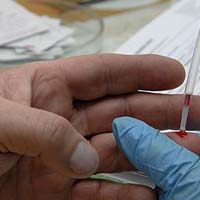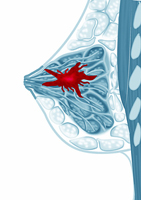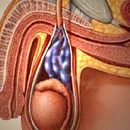How diagnosed egg cancer? What includes modern methods of treating this ailment? What is the forecast for the disease? Answers to these questions are contained in this article.
Content
Egg cancer (with the exception of seminine) - a very aggressive malignant tumor with a doubling time of 10-30 days. However, primarily due to modern methods of chemotherapeutic treatment, mortality rates from this disease have now decreased significantly.
Although the etiology and genetic factors of the development of the disease are not understood enough, it is known that the main risk factor for the egg cancer is Cryptorchism (unlevated eggs). Thus, 10% of patients with egg cancer have a history of cryptorchism, and 50% of them - intra-abdominal. Orchidociasis (reeling eggs) at an early age reduces the risk, but does not completely eliminate the possibility of developing the disease.
Other known risk factors include clanfelt syndrome, egg cancer in close relatives, contact with tin, infertility.
How diagnosed egg cancer
Usually the patient makes complaints about randomly discovered dense painless education, nodules or swelling on the testicular, the appearance of which can be accompanied by a sense of gravity or stupid pain at the bottom of the abdomen. Sometimes an acute pain may occur due to the rapid growth of neoplasm due to hemorrhage and necrosis. 10% of patients first manifestation is epididimitis. Almost 50% of patients are the first metastases, but only 10% of them have symptoms of metastatic disease.
When a patient survey, the doctor draws attention to cryptorchism, egg injuries, chronic or recurrent epididimitis in history, the presence of inexplicable body weight loss or fever.
Inspection begins with a healthy side with the crossing side. Eggs tumor is usually dense and painless when palpation. Often it is accompanied by reactive hydrocel, varicocele and / or epididium.
All solid formations of the scrotum are taken to suspect in malignancy and carry out the appropriate diagnostic search and treatment.
To the simplest and at the same time, a well-informative instrumental study includes a diaphanoscopy (egg transmission with a narrow beam of light).
 Standard clinical and laboratory studies are also applied:
Standard clinical and laboratory studies are also applied:
- General analysis of blood and urine;
- blood chemistry ;
- Definition of protein fractions and t.D.
Medical imaging methods are widely used:
- ultrasound research methods;
- X-ray computed tomography;
- magnetic resonance tomography;
- X-ray-contrast research methods.
They allow not only to identify the presence and features of tumor growth, but also to evaluate the surrounding tissues, which allows you to identify the presence of the nearest and remote metastases.
Special attention is paid to the definition of specific tumor markers.
Modern methods for treating egg tumors
The treatment of egg tumors depends first of all, from the stage. So, with seminols of the first stage (without distribution to lymph nodes), the egg removal and irradiation of trashy and iliac lymph nodes are removed. Such treatment makes it possible to achieve 5 years survival at the level of 95 percent (95 percent of patients who received treatment live more than 5 years). At the second stage (with the lesion of lymphatic nodes, but during metastases in lymph nodes, no more than 5 cm) is also removed by the affected eggs and irradiation of retroperitoneal and iliac lymph nodes. 5 year survival in this case amounts to 90 percent.
3 The stage of the disease is required not only surgical and radiation treatment, but also the use of chemotherapy, which necessarily includes cisplatin. 90 percent of patients succeeded to reach 5-year survival. With the fourth stage of egg cancer, a combination treatment is also required that success can bring.
With undeminar egg tumors, treatment also includes operation - orchectomy (egg removal). With damage to lymphatic components, chemotherapy is required, as well as operational intervention, providing for the removal of retroperitoneal lymph nodes.









